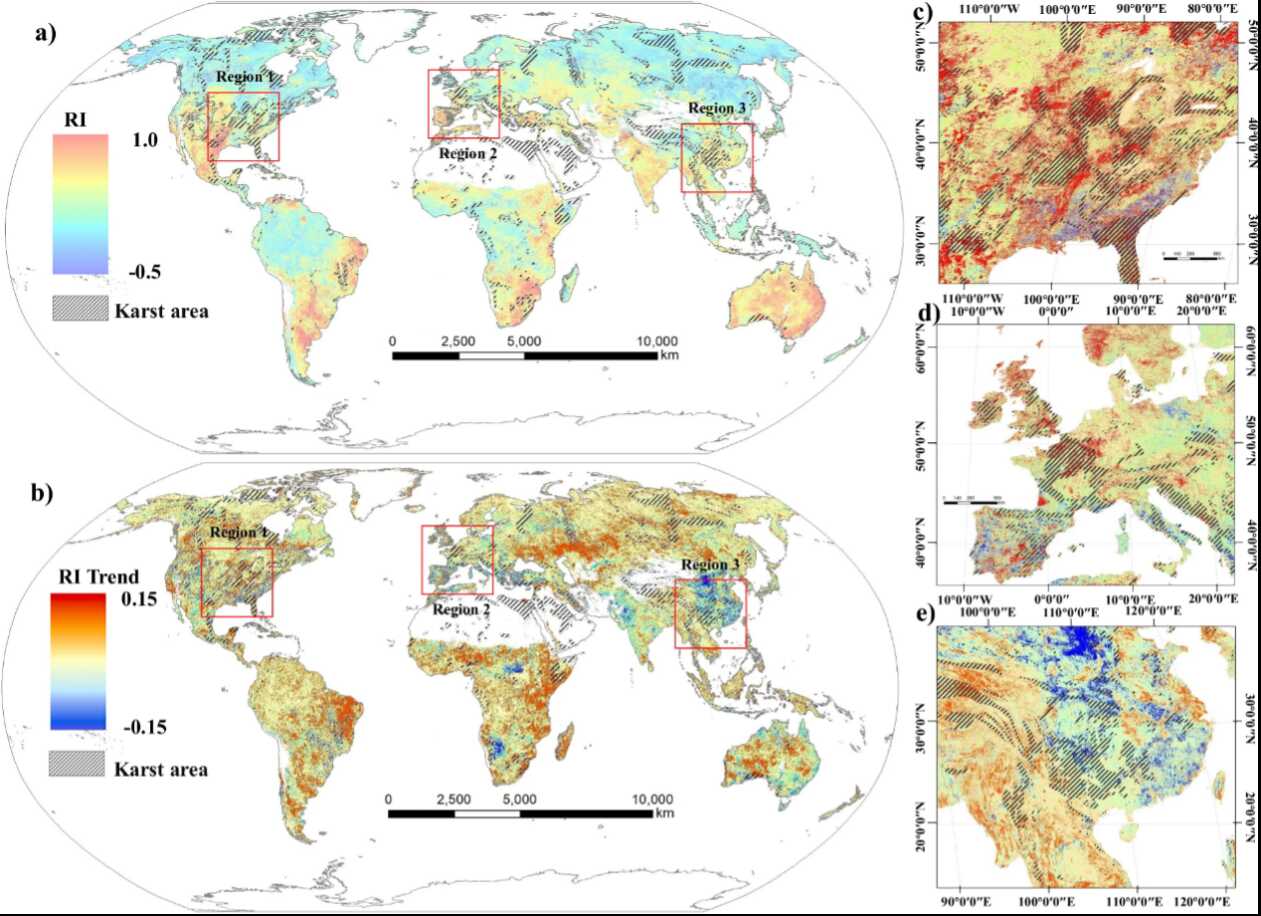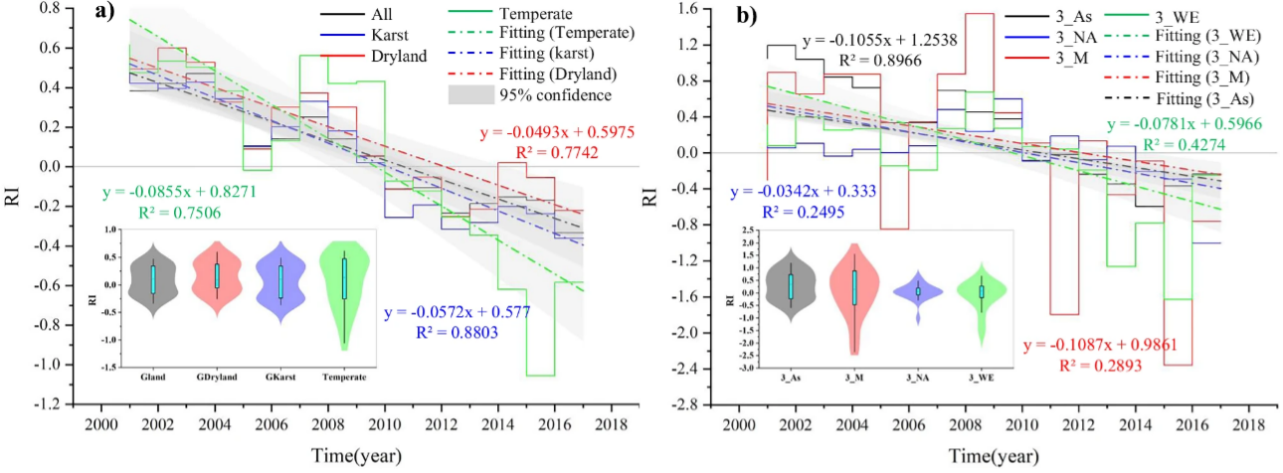A research team led by Prof. WANG Li from the Aerospace Information Research Institute (AIR) of the Chinese Academy of Sciences has found that ecosystems with more complete ecological succession and longer existence exhibit strong adaptability to drought. Their findings were recently published in npj Climate and Atmospheric Science.
Using long-term satellite imagery (2000-2019) and an advanced automated algorithm, the team developed an evaluation framework based on vegetation response intensity (RI). The framework incorporates drought stress windows and delayed vegetation response windows to assess vegetation adaptability to drought.
The results showed that vegetation adaptability in global karst areas is generally on the rise (-0.06 yr-1, p<0.01), but varies significantly by region. While vegetation in all karst regions demonstrates weak adaptability to short-term sudden droughts, their resilience to long-term drought differs: karst vegetation in Europe (RI=0.05) and North America (RI=0.10) is more adaptable than that in Asia (RI=0.23).
Additionally, although ecological restoration can rapidly increase vegetation coverage in sensitive and fragile karst areas, artificially restored young vegetation shows limited short-term adaptability to drought. The adaptability of karst vegetation to drought is mainly influenced by four factors: forest age (positive effect: 16.67%), slope (negative effect: 18.87%), precipitation (negative effect: 32.27%), and human disturbance (negative effect: 31.22%). Ecosystems with more complete ecological succession and longer existence display strong drought adaptability.
"Strengthening the drought resilience of karst ecosystems is vital for global sustainability," said Dr. HE Yuanhuizi, lead author of the study. "While ecological restoration can rapidly restore vegetation cover, young vegetation still lacks the adaptability of mature ecosystems."
Long-term resilience depends on fostering stable and well-developed vegetation communities capable of withstanding increasing climate pressures, the researchers noted.
The study was supported by the National Key Research and Development Program of China and the National Natural Science Foundation of China, among other funding sources.

Spatial heterogeneity of global vegetation drought adaptation. (Image by AIR)

Global trend of drought adaptation of karst vegetation. (Image by AIR)






